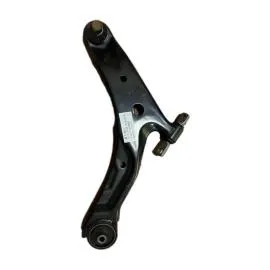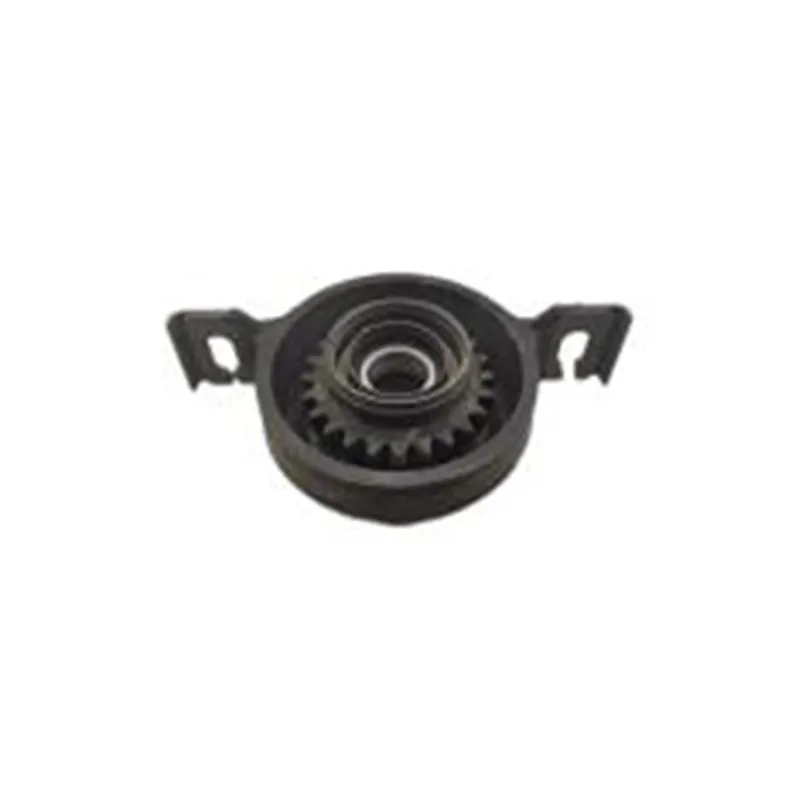
-
 Afrikaans
Afrikaans -
 Albanian
Albanian -
 Amharic
Amharic -
 Arabic
Arabic -
 Armenian
Armenian -
 Azerbaijani
Azerbaijani -
 Basque
Basque -
 Belarusian
Belarusian -
 Bengali
Bengali -
 Bosnian
Bosnian -
 Bulgarian
Bulgarian -
 Catalan
Catalan -
 Cebuano
Cebuano -
 Corsican
Corsican -
 Croatian
Croatian -
 Czech
Czech -
 Danish
Danish -
 Dutch
Dutch -
 English
English -
 Esperanto
Esperanto -
 Estonian
Estonian -
 Finnish
Finnish -
 French
French -
 Frisian
Frisian -
 Galician
Galician -
 Georgian
Georgian -
 German
German -
 Greek
Greek -
 Gujarati
Gujarati -
 Haitian Creole
Haitian Creole -
 hausa
hausa -
 hawaiian
hawaiian -
 Hebrew
Hebrew -
 Hindi
Hindi -
 Miao
Miao -
 Hungarian
Hungarian -
 Icelandic
Icelandic -
 igbo
igbo -
 Indonesian
Indonesian -
 irish
irish -
 Italian
Italian -
 Japanese
Japanese -
 Javanese
Javanese -
 Kannada
Kannada -
 kazakh
kazakh -
 Khmer
Khmer -
 Rwandese
Rwandese -
 Korean
Korean -
 Kurdish
Kurdish -
 Kyrgyz
Kyrgyz -
 Lao
Lao -
 Latin
Latin -
 Latvian
Latvian -
 Lithuanian
Lithuanian -
 Luxembourgish
Luxembourgish -
 Macedonian
Macedonian -
 Malgashi
Malgashi -
 Malay
Malay -
 Malayalam
Malayalam -
 Maltese
Maltese -
 Maori
Maori -
 Marathi
Marathi -
 Mongolian
Mongolian -
 Myanmar
Myanmar -
 Nepali
Nepali -
 Norwegian
Norwegian -
 Norwegian
Norwegian -
 Occitan
Occitan -
 Pashto
Pashto -
 Persian
Persian -
 Polish
Polish -
 Portuguese
Portuguese -
 Punjabi
Punjabi -
 Romanian
Romanian -
 Russian
Russian -
 Samoan
Samoan -
 Scottish Gaelic
Scottish Gaelic -
 Serbian
Serbian -
 Sesotho
Sesotho -
 Shona
Shona -
 Sindhi
Sindhi -
 Sinhala
Sinhala -
 Slovak
Slovak -
 Slovenian
Slovenian -
 Somali
Somali -
 Spanish
Spanish -
 Sundanese
Sundanese -
 Swahili
Swahili -
 Swedish
Swedish -
 Tagalog
Tagalog -
 Tajik
Tajik -
 Tamil
Tamil -
 Tatar
Tatar -
 Telugu
Telugu -
 Thai
Thai -
 Turkish
Turkish -
 Turkmen
Turkmen -
 Ukrainian
Ukrainian -
 Urdu
Urdu -
 Uighur
Uighur -
 Uzbek
Uzbek -
 Vietnamese
Vietnamese -
 Welsh
Welsh -
 Bantu
Bantu -
 Yiddish
Yiddish -
 Yoruba
Yoruba -
 Zulu
Zulu
Premium Control Arm on Vehicle | Enhanced Stability & Durability
Comprehensive Technical Analysis and Industry Trends for Automotive Professionals
Hebei Lingke Vientiane Supply Chain Co., LTD.
Official Website: www.lkcontrolarm.com
Email: wenda@qfparts.com | Phone: +86 13932922239
Introduction to Vehicle Control Arms
The control arm on a vehicle, also referred to as an A-arm or wishbone, forms the critical connection between your vehicle's suspension system and chassis. As a core component of modern automotive suspension systems, the automobile control arm performs several essential functions:
- Maintains proper wheel alignment and tire contact with the road surface
- Controls wheel movement during suspension articulation
- Transfers vertical forces from the wheels to the chassis
- Allows rotational motion while resisting lateral movement
- Supports critical vehicle systems like steering and braking
Modern vehicles typically utilize multiple control arms in a double-wishbone or multi-link suspension configuration. The car front lower control arm typically carries the highest structural loads and is most susceptible to wear and fatigue failure. Understanding the engineering principles behind these components is essential for maintenance professionals, engineers, and automotive enthusiasts alike.
Featured Product: Premium Control Arm Solution

Suspension Lower Control Arm For Hyundai Santa Fe (54501-26000)
Engineered to meet or exceed OEM specifications for safety and durability.
- Precision-matched to original vehicle dimensions for perfect installation
- Improves driving stability and eliminates suspension noise
- Constructed with high-grade materials for maximum safety and longevity
- Rigorous quality assurance testing including fatigue simulation
- Enhances ride comfort and handling precision
Contact Our Technical Experts
For technical specifications, bulk orders, or custom manufacturing inquiries:
Email: wenda@qfparts.com | Phone: +86 13932922239
Technical Specifications and Materials
The material composition and manufacturing processes of a control arm on a vehicle directly determine its performance characteristics and service life. Different vehicle segments utilize varying approaches:
| Parameter | Economy Vehicles | Performance Vehicles | Heavy Duty/Commercial | Aftermarket Premium |
|---|---|---|---|---|
| Primary Material | Stamped Steel | Forged Aluminum | Cast Iron / High-Strength Steel | Forged Steel/High-Grade Aluminum |
| Tensile Strength | 350-500 MPa | 400-600 MPa | 550-850 MPa | 500-700 MPa |
| Weight Range | 4.5-6.5 kg | 2.8-4.2 kg | 8.5-12.5 kg | 3.8-5.8 kg |
| Bushing Type | Rubber | Polyurethane/Hydro | Heavy-Duty Rubber | Performance Polyurethane |
| Load Capacity | 800-1200 kg | 700-1100 kg | 1600-3000 kg | 900-1500 kg |
| Fatigue Cycles | 500k-700k | 800k-1.2M | 1.5M-2M | 1M-1.5M |
The design and manufacturing of car front control arm components have evolved significantly, with modern Finite Element Analysis (FEA) enabling optimization of stress distribution and weight reduction while maintaining structural integrity. The car front lower control arm in particular requires careful engineering to withstand the complex combination of vertical, lateral, and braking forces during vehicle operation.
Material Science Evolution in Control Arm Manufacturing
Materials used in automobile control arm manufacturing have evolved dramatically over the past two decades. This progression responds to the dual demands for increased strength-to-weight ratios and improved corrosion resistance:
- Stamped Steel (2000-2010): The industry standard offering good strength at low cost but with significant weight penalties
- Cast Iron (Heavy Vehicles): Still used in commercial applications requiring extreme durability
- Aluminum Forging (2010-Present): Increasing adoption in passenger vehicles for weight reduction and corrosion resistance
- Advanced Composites (Emerging): Carbon fiber reinforced polymers in prototype stage for premium sports cars
Quality Benchmarks and Manufacturing Standards
At Hebei Lingke Vientiane, our car control arm manufacturing process adheres to the most stringent international quality standards, including ISO 9001:2015 and IATF 16949 certification. Each component undergoes seven-stage quality verification:
- Raw material spectrometry testing
- Precision forging under 1200-ton hydraulic press
- Robotic welding with laser alignment
- CNC machining for dimensional accuracy
- Electrophoretic anti-corrosion coating
- 3D scanning for dimensional verification
- Fatigue simulation testing (minimum 1 million cycles)
This comprehensive approach ensures that every control arm on a vehicle we produce meets or exceeds OEM specifications for structural integrity, dimensional accuracy, and service life.
Failure Analysis and Maintenance Best Practices
Common failure modes for automobile control arm components typically include:
- Bushing Degradation (42% of failures): Rubber/polyurethane deterioration leading to steering wander and tire wear
- Ball Joint Wear (28%): Excessive play causing knocking sounds during suspension travel
- Structural Fatigue (15%): Crack propagation from stress concentrations
- Corrosion (10%): Particularly problematic in winter road salt conditions
- Impact Damage (5%): Resulting from road hazards or accidents
Preventative maintenance includes regular visual inspections, listening for suspension noises, and monitoring for uneven tire wear or steering instability. Industry data shows that replacing car front lower control arm assemblies between 80,000-120,000 miles prevents 94% of suspension-related accidents caused by component failure.
Professional Technical FAQ
Q: What is the optimal material choice for high-performance vehicle control arms?
A: Forged aluminum alloys (6061-T6 or 7075-T6) offer the best combination of strength-to-weight ratio for performance applications. These materials reduce unsprung weight by 35-40% compared to steel equivalents while maintaining the structural rigidity needed for precise handling.
Q: What testing standards apply to aftermarket control arms?
A: ISO 3780 specifies the fatigue testing protocols, requiring a minimum of 500,000 cycles at 1.5 times normal load without failure. Premium manufacturers like Hebei Lingke exceed this standard with 1 million cycle testing and FEA validation for critical stress areas.
Q: How do polyurethane bushings differ from OEM rubber bushings?
A: Polyurethane offers 40-50% higher durometer hardness than rubber, improving handling precision and reducing bushing deflection. Durability is typically 2-3 times that of rubber, though with a slight trade-off in vibration damping characteristics.
Q: What tolerance standards apply to control arm mounting points?
A: Critical mounting holes must be manufactured to H7 tolerance (±0.018mm) to ensure proper suspension geometry alignment. Our manufacturing process achieves positional accuracy within ±0.05mm across all mounting points to maintain factory suspension specifications.
Q: How are control arms engineered to prevent crack propagation?
A: Modern designs incorporate radiused transitions, eliminating sharp corners where stress concentrations develop. Surface treatment techniques like shot peening introduce compressive stresses that inhibit crack initiation. Critical areas often include additional material in high-stress zones identified through FEA modeling.
Q: What coating systems provide optimal corrosion resistance?
A: Cataphoresis (E-coat) followed by powder coating provides superior salt spray resistance exceeding 1000 hours. This dual-layer protection is crucial for the car front control arm which faces direct exposure to road debris and deicing chemicals.
Q: What design considerations differ for EV control arms?
A: Electric vehicles introduce additional requirements including higher torsional stiffness for regenerative braking forces and weight optimization to offset battery mass. Designers are increasingly integrating suspension mounting points with battery protection structures for improved crash safety performance.
Industry Analysis and Future Trends
The global car control arm market is projected to reach $18.7 billion by 2028, growing at a CAGR of 5.8% according to MarketWatch analysis. This growth is driven by multiple factors:
- Increasing vehicle parc in developing markets
- Higher replacement frequency in regions with poor road infrastructure
- Growth in EV platforms requiring specialized suspension components
- Increased performance demands from sophisticated electronic stability systems
Technical innovation continues to transform the design and manufacturing of control arm on a vehicle components:
- Additive Manufacturing: Selective Laser Sintering (SLS) for complex geometries
- Smart Suspension: Integrated strain gauges for real-time load monitoring
- Material Advances: Metal matrix composites with ceramic reinforcement
- Modular Designs: Serviceable bushings and joint assemblies
Leading manufacturers like Hebei Lingke are investing in Industry 4.0 manufacturing approaches, implementing AI-based quality control systems and automated optical inspection to achieve zero-defect targets in mass production environments.
Technical References and Industry Sources
- International Journal of Automotive Technology: "Fatigue Life Prediction of Automotive Control Arms Using Multiaxial Criteria" (2023) - https://www.springer.com/journal/12239
- SAE Technical Paper: "Design Optimization of a Lightweight Aluminum Control Arm" (2022) - https://www.sae.org/publications/technical-papers
- AutoSuspensionPro Forum: "Corrosion Protection Standards for Suspension Components" (2023) - https://www.autosuspensionpro.com/forum
- Advanced Materials & Processes: "Metallurgical Analysis of Forged vs. Cast Control Arms" (2022) - https://www.asminternational.org
- European Transport Safety Council: "Suspension Component Failure Accident Statistics" (2023) - https://etsc.eu
-

 English
English
 Afrikaans
Afrikaans
 Albanian
Albanian
 Amharic
Amharic
 Arabic
Arabic
 Armenian
Armenian
 Azerbaijani
Azerbaijani
 Basque
Basque
 Belarusian
Belarusian
 Bengali
Bengali
 Bosnian
Bosnian
 Bulgarian
Bulgarian
 Catalan
Catalan
 Cebuano
Cebuano
 Corsican
Corsican
 Croatian
Croatian
 Czech
Czech
 Danish
Danish
 Dutch
Dutch
 Esperanto
Esperanto
 Estonian
Estonian
 Finnish
Finnish
 French
French
 Frisian
Frisian
 Galician
Galician
 Georgian
Georgian
 German
German
 Greek
Greek
 Gujarati
Gujarati
 Haitian Creole
Haitian Creole
 Hausa
Hausa
 Hawaiian
Hawaiian
 Hebrew
Hebrew
 Hindi
Hindi
 Miao
Miao
 Hungarian
Hungarian
 Icelandic
Icelandic
 Igbo
Igbo
 Indonesian
Indonesian
 Irish
Irish
 Italian
Italian
 Japanese
Japanese
 Javanese
Javanese
 Kannada
Kannada
 Kazakh
Kazakh
 Khmer
Khmer
 Rwandese
Rwandese
 Korean
Korean
 Kurdish
Kurdish
 Kyrgyz
Kyrgyz
 Lao
Lao
 Latin
Latin
 Latvian
Latvian
 Lithuanian
Lithuanian
 Luxembourgish
Luxembourgish
 Macedonian
Macedonian
 Malgashi
Malgashi
 Malay
Malay
 Malayalam
Malayalam
 Maltese
Maltese
 Maori
Maori
 Marathi
Marathi
 Mongolian
Mongolian
 Myanmar
Myanmar
 Norwegian
Norwegian
 Norwegian
Norwegian
 Occitan
Occitan
 Pashto
Pashto
 Persian
Persian
 Polish
Polish
 Portuguese
Portuguese
 Punjabi
Punjabi
 Romanian
Romanian
 Russian
Russian
 Samoan
Samoan
 Scottish Gaelic
Scottish Gaelic
 Serbian
Serbian
 Sesotho
Sesotho
 Shona
Shona
 Sindhi
Sindhi
 Sinhala
Sinhala
 Slovak
Slovak
 Slovenian
Slovenian
 Somali
Somali
 Spanish
Spanish
 Sundanese
Sundanese
 Swahili
Swahili
 Swedish
Swedish
 Tagalog
Tagalog
 Tajik
Tajik
 Tamil
Tamil
 Tatar
Tatar
 Telugu
Telugu
 Thai
Thai
 Turkish
Turkish
 Turkmen
Turkmen
 Ukrainian
Ukrainian
 Urdu
Urdu
 Uighur
Uighur
 Uzbek
Uzbek
 Vietnamese
Vietnamese
 Welsh
Welsh
 Bantu
Bantu
 Yiddish
Yiddish
 Yoruba
Yoruba
 Zulu
Zulu
 Nepali
Nepali






